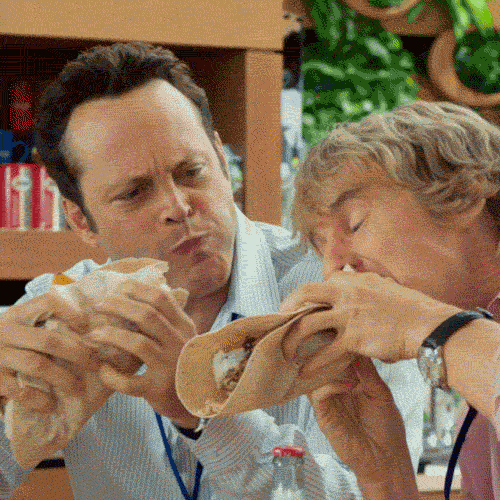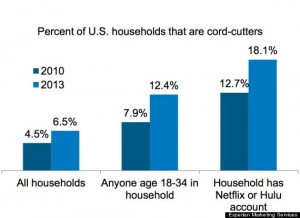Enrique’s Journey
October 30, 2014
The website for Enrique’s Journey, casts a huge spot light on the immigrant children who are undocumented because the website is not just to sell the book written by Sona Nazario. There are many tabs on the top of the page that can take you to different links for resources and also keep you updated on the family that she wrote about.
Nazario also has pictures of other injured immigrants which help the cause as well because as a reader, you are seeing the outcome of these immigrants who have been trying to escape their countries for good reasons. There are also captions that tell you about the immigrants and you can see how they are living their every day lives without their limbs.
To me these pictures are extremely important in bringing awareness to these undocumented immigrants. They add so much value to the website in ways words just simply could not. Seeing these pictures makes me think of the phrase “A picture speaks 1,000 words.” Because of these pictures people can see the outcomes of many of these people who are trying to escape and make a better life.
You can see how happy these people are just to be alive, regardless of their missing limbs. You can actually see and feel how they are reacting to the simple things in life like going to the beach and feeling the ocean and sand. Instead of just reading about it, the pictures add that vital piece of reality and put faces to these names and words.
In order to localize a story with such raw emotion and many other emotions, I would make it to showing how many immigrants are actually in New Jersey.
The Website shows how many of these unaccompanied immigrants are in New Jersey and other states. There are 2,276 unaccompanied immigrants in the state of New Jersey and the number seems to be growing.
I would even take it a step further and show certain counties in New Jersey. Since the county I live in does not show up on the list, I would use the closest one which is Monmouth County: which has 57 unaccompanied immigrants. I could even use Bergen County and direct the cause to the college students in and around that county.
I would find where they are staying and also put a story and picture to these names so the people in the surrounding areas can really begin to understand what these people went through and how they are living their lives today.
I would even follow them for a day, if they let me, and take pictures and add multimedia to the story and really show what these people went through to end up in the New Jersey counties they reside in today.
The one picture that really stuck with me was the one of the woman sitting in her wheel chair and being lifted into the ocean. You could see on her face that simply just feeling the water and sand really meant that much to her.
Seeing Leti Isabela Mejia Yanes sitting on that beach and the smile on her face, it makes you realize that there are things in life that you take for granted such as sitting on the beach. To think that she will never be able to feel the sand between her toes ever again is devastating all in itself. And it makes you really think about what she had to go through in order to lose her legs and every thing else that came along with that extremely dangerous journey.
Becoming an Entrepreneurial Journalist
October 9, 2014
Journalists all over the world are competing to have their particular voice out there, and be recognized on some type of spectrum. But how can you make your own voice stand out from the rest? It may be threatening seeing all these hard working journalists out there and prepping their name for when they hit it big, but you could so the same thing! There are plenty of ways for you to get your ideas out there but you can’t just sit around and ponder over the what if’s!  Here are some tips you can use to help motivate you and your ideas.
Here are some tips you can use to help motivate you and your ideas.
1. Finding your online community. The online world is a diverse one, so finding an online community to tend to is crucial. You have to find a group that you can not only relate to, but that has a need you can fulfill online. Once you find your home away from home online, the next step is finding their need and supplying them with an answer. 
2. Just because it’s out there, doesn’t mean it’s perfect!  Even though the need may be filled already, it doesn’t mean you can’t put your own spin on it. Remember there is only one you, which means you see the world differently than other people and especially other writers. So just because your idea is out there doesn’t mean to give up! Find what’s missing and perfect it! Be an incremental innovator!
Even though the need may be filled already, it doesn’t mean you can’t put your own spin on it. Remember there is only one you, which means you see the world differently than other people and especially other writers. So just because your idea is out there doesn’t mean to give up! Find what’s missing and perfect it! Be an incremental innovator!
3. Networking!  Now that you found your place in the World Wide Web, it’s time to contact your friends in high places. Networking is crucial to getting your name and your work out there. The Internet reaches the masses but if you use your connections with the people you meet from your internships and other jobs, you can take your idea to new levels!
Now that you found your place in the World Wide Web, it’s time to contact your friends in high places. Networking is crucial to getting your name and your work out there. The Internet reaches the masses but if you use your connections with the people you meet from your internships and other jobs, you can take your idea to new levels!
4. Design for Generosity You should pick a problem to fix because it pertains to you, don’t do things just because it’s there. You should pick a need that you can write about. It shouldn’t be forced. You should write because you want to, not because other people like it. 
Becoming an entrepreneurial journalist can be intimidating, but once you put your foot in the door, your ideas will speak for themselves! Gifs courtesy of reactiongifs.com. But maybe take out a couple of your exclamation points because they can seem overwhelming when used frequently. I really liked how you used a lot of GIFs, it added to your column a lot. For number 4, maybe go back and add to the section–it seems a little repetitive.
Are Smartphone Apps Changing Sports for Good?
October 2, 2014
There’s four seconds left in the game, your favorite player has the ball, and you’re at work, never knowing if your team is heading to the playoffs. But lucky for you, there’s an app for that. Sport Apps are taking the world by storm, changing scenarios, just like the one above, and allowing sports fans all over the world to keep tabs on their favorite teams. But are they molding the world of sports into strictly stats in a notification center? The world of sports has always been an on-demand society, however with the new technology it has picked up an even faster pace. The days of tuning into Sports Center and watching the game in real time on television are over. The new age of receiving updates from various games to even watching games in real time on a smartphone or tablet is here. There are millions of these apps for all smartphones and for all sports. When watching a game on television just isn’t in the stars for you, if there’s a will there’s a way: and that way is smartphone applications. “I like sport apps, because they make it more accessible for me to check up on my favorite teams,” said Alex Rigoli, Ramapo sophomore. These apps, such as NFL Mobile, Sports Center App and Watch ESPN App allow people to stay in touch with the sports world by having notifications for their favorite teams. According to Google Play, the NFL Mobile App is the most popular sports application in the free market. This app is specified for the National Football League; it has different news feed from around the league and you can have updates for any team or any game going on. If you have a service through Verizon Wireless, you can even watch NFL games in real time wherever you are on a smartphone or tablet, making it so those die hard fans will never miss a game for another birthday party or other occasion ever again. The Sports Center and Watch ESPN Apps round out the top three apps according to Google Play. These apps allow the sports world to be in the palm of your hand at anytime and anywhere; they give updates and notifications about any sports or team, even specific games. With this new technology comes a whole new territory: which leads to people feeling they are missing something from the live game atmosphere. Mark Cuban, owner of the NBA’s Dallas Mavericks, feels people are searching for entertainment with technology during a sporting event. In 2011, Cuban posted a blog frankly titled “The Fan Experience at Sporting Events- We don’t need no stinking smartphones!” he explains in his blog that people are desperately searching for some technology to be incorporated into the world of sports, simply because we can. But that’s not what he feels the sports world is in dire need of; he talks about the feeling you have at a game, who you go with, you’re favorite play is what people really should be concerned with. “We in the sports business don’t sell the game, we sell unique, emotional experiences.We are not in the business of selling basketball. We are in the business of selling fun. We are in the business of letting you escape. We are in the business of giving you a chance to create shared experiences,” said Cuban. Cuban isn’t the only one who feels this way, the College of New Jersey junior, Theresa Soya of Shrewsbury, NJ, has similar views in this new age of sports technology. “The apps botch the experience for me,” said Soya, 20. “I like to be home watching it on my TV and taking it in for myself, not getting a compromised version on my phone screen.” Soya seems to be an “old soul” amongst her generation. Many students her age rely on sports apps to keep them updated on games and teams. When asked about her generation and needing these types of apps on her phone, she had a very different opinion than her counterparts. “When I want sports, I watch it on my TV, why would I need the sports app,” said Soya. While others in her generation feel that the sports app era is improving the amount of sports followers from the generations to come. Rigoli feels that these sports apps are helping the ordinary sports fan, become super fans of not just their teams but their favorite sports, due to the exposure the app provides. “I feel the apps have increased the number and devotion of sport fans,” said Rigoli. “My interests in various sports have increased with the use of these apps since I have everything and all of the latest stories at my fingertips.” Netflix: A New Generation of Watching By LARISSA FORESE September 25, 2014 If you haven’t heard of the phenomenon of online streaming, you may have been living under a rock for quite some time. Netflix has been taking over dorm rooms and households for years, but just recently worked its way over to Europe, expanding its online streaming brand across the globe. Netflix has been drawing in customers in America with it’s binge watching powers, and it is now seeping over the pond and into many European countries.
Netflix, Amazon Prime Instant Video and Hulu Plus are the new competitors for the cable companies all around the world. Netflix however, seems to be the most popular in the online streaming frenzy, especially among American college students. But why stop there? Netflix has already conquered America and is looking to take on most of Europe with it’s on-demand type streaming. “Netflix is very convenient, I don’t like going to the movie theater so it saves me time and money, ” said I’india Davenport a junior at Ramapo College. Netflix was created in 1997 by Reed Hastings and Marc Randolph. This site all started from frustration and a great idea that solved a need by movie loving people around the world. The duo created the idea for mail order DVDs while Hastings was forced to pay $40 in fees at a video rental store. In 1999, is when Netflix became similar to what it is today: sales were dying causing the company to turn into a subscription based service solely for DVDs. Netflix blew up the online streaming scene in 2007 and has not looked back since. It now has over fifty million members and its services reaches over forty countries around the world, it also just infiltrated countries in Europe such as: France, Germany, Belgium, Austria, Switzerland and Luxembourg, Friday, Sept. 19. As Netflix popularity grows, cable subscriptions are shrinking and shrinking fast. More people are canceling their cable and living with Netflix subscriptions, according to the Huffington Post. Cord cutting, as mentioned in a Huffington Post Article, is now known as foregoing the costly cable and satellite bills and watching television shows and movies through online services. The number of “cord cutters” has risen 44 percent in just three years; now 7.6 million homes go without cable or satellite services.

This graph shows the amount of people in the United States who have dropped their cable companies and now stream online.
PHOTO//Experian Marketing Services
Kelly Nelson, from Bricktown, New Jersey, has since moved to Texas and has continued her Netflix subscription but never returned to the cable companies. “One of the main reasons I switched was because how expensive it is, not having my parents paying for cable showed me how expensive it really can be, Netflix is just so much cheeper,” said Nelson. According to the Economist, Americans are paying around $80 a month for cable television- not including broadband- when Netflix users are paying $10 a month. A study done by Experian Marketing Group, also shows a fifth of the United States that does not use cable services has a subscription to Netflix or Hulu, the number rises as the age of users goes down. John Fetto, a senior analysts at Experian Marketing Services told the Huffington Post, does see the decline and feels many in the younger generation may never experience paying for cable or satellite. “The young millennials who are just getting started on their own may never pay for television,” said Fetto to the Huffington Post. “Pay TV is definitely declining.” Many college students turn to Netflix than the cable provided by the schools themselves. Binge watching is a new epidemic among the college students; and it is defined by the Oxford Dictionary as watching multiple episodes of a television program in rapid succession, typically by means of DVDs or digital streaming. With college students having stressed schedules, watching Netflix means watching their favorite shows and movies on their own time. But is there such thing as too much of good thing? “It’s addicting, once you start a show you can’t stop,” said Doris Ilic, a Ramapo sophomore. Davenport agrees, Netflix distracts her from her work but she just can’t seem to drag her eyes away from her laptop screen. “At night I tell myself I’m going to read, but instead I find myself watching Netflix until I fall asleep,” said Davenport. “I get my work done eventually, so I don’t feel it has a huge impact on my grades.” Netflix not only poses a threat to the school work of college students, but it also takes time away from their social life as well. Ilic feels it is so addicting that she finds herself skipping out on her friends and social activities. “When I started watching Orange is the New Black I would tell my friends I was busy when they wanted to go out, but I was really just watching Netflix,” said Ilic. With many of her peers being subscribed to Netflix, she also agrees with Fetto and sees a decline in the relationship between generation and cable services. “I honestly think eventually cable TV will be gone, and Netflix will be the primary source for shows and movies. Especially with Netflix expanding throughout Europe. It’s unstoppable and unavoidable,” said Ilic.
New Digital Face of Journalism
September 18, 2014
The Internet supplies many opportunities to put yourself and your product out there. For journalists, the Internet can make or break you. Creating a website is the first step into making your mark in the digital journalism world. The Internet can be tricky to some, and may come off intimidating at times due to the fact that once something is out on the World Wide Web, it’s there forever. There are some tips that can help you create the ultimate website and attract a specific demographic you have in mind.
Mark Briggs introduces a new wave of journalism in his book, ‘Entrepreneurial Journalism: How to Build What’s Next For News.’ Briggs brings up points throughout his chapters about creating a journalistic product that fits perfectly into what you want instead of what the Internet can portray you to be. Two valid points Briggs makes are: embracing a trial and error method and creating something that will help you create a digital community.
Trial and Error
Part of the creative process means taking some steps back before you can run forward. Not everything is going to be a hit on the Internet, and will not be accepted by the people searching on the Internet. But, you should not let that discourage you or your dream. Embrace the trial and error period, because you learn more from making mistakes then the times you succeed. Those mistakes will help you mold your product into exactly how you envisioned it. Messing up does not always mean failing.
Digital Community
Creating a digital community is essential. It helps your product receive the publicity that it needs. This ties into another one of Briggs’ points: Catering to an audience. If you cater to the right audience and bring the right tools you can create a solid digital community to wrap your idea around and bring it to it’s full potential and beyond. Having a stable and trusting relationship with the community you helped create is the most important aspect of creating a product. You need to step back and examine what you want to do and how you want to do it.
Twitter is taking the world by storm and is now worth more than $5 billion and that price escalates every day. One of the top media sites, Twitter connects people in a way no other site can. It’s a different take on what Facebook had already done, but in 140 characters or less.
Twitter originally started out as a podcast website called Odeo, created by two former Google employees. But, iTunes beat them to the punch and quickly made Odeo irrelevant. This relates back to Briggs’ idea of trial and error. If the founders never decided to move on after Odeo, the social media scene would have been completely different. But, what Evan Williams, Biz Stone and Jack Dorsey, another Odeo employee, did was focus on what the people of the Internet not just wanted but needed. That moment in 2006, they catered to the people and created a community following online to create one of the biggest social media websites in the world.
Forbes Embraces New Era Journalism
Forbes had also mentioned the new digital journalism age, where you can create a name for yourself all by using the Web. They have broken away from the stereotypical journalists and are contributing to a new digital journalists who creates their own name and is attributed to their own success all while being “freed from hierarchical editing systems.”
Forbes wants their journalists to break out and use social media and to become beat reporters, so that they can beat their competition when it comes to reporting. This all seems to familiar; flashing back 25 years ago, when the Internet first came out newspapers were afraid to go digital feeling it wouldn’t catch on. And now, Forbes is doing just the opposite. They understand what an asset the Web can be to a reporters success, so instead of running from this new digital journalism era, they’re embracing it.
Forbes’ digital writers are in constant contact with their audience, which helps them create a different point of view that traditional journalists may not have. It gives these writers an edge up, which will bring in more traffic not to just their pieces but the Forbes website as well. Having their reporters present on the Web and digitalize and consulting with their audiences is the strongest characteristic Forbes can have in their writers, which will ultimately lead them to success, both writer and publication.
“The native digital journalists who’ve come aboard and the ink-stained wretches who stayed on during our transformation are training each other,” wrote Forbes staff writer, Lewis DVorkin.
Ethical Hurdles of the Internet
The Internet is here to stay, and it will continue to change the journalism world as we know it. However, there are some ethical challenges digital journalists face. The biggest problem I see is who will be considered a journalist, which leads to who will stick with ethics while reporting. The Internet is a vast and permanent place, that anyone with a connection can post and report. But not everyone will be singing the same tune.
The Internet has a calm feeling to it, journalists may feel they can do the same with their pieces, ethically. The guard against the Internet is something people do not think of. With such a wide and diverse audience, you never know what type of backlash you will recieve when it comes to posting on the Web. Some reporters may feel they have a security blanket when posting on the Internet and can let some ethical standards slip through the cracks without even knowing it.
Remembering September 11 Digitally
Sept. 11, 2014
Sept. 11 is a monumental day for Americans and the coverage of this day; and the events that happened in 2001 have evolved over the past 13 years. An article in the New York Times speaks about exposing the millennials who were too young to remember or weren’t even born when Sept. 11, 2001 had happened.
Whoopi Goldberg will be narrating a new video, only broadcasts on the Web, about the attacks. Along with a fundraising campaign managed through twitter. Using the Internet, it will be easier for people to donate money and see the video. The Twitter fundraising will work while people tweet about the Sept. 11 attacks and 25 cents will be donated for every character used.
Every user will be asked to log in with a credit card, this way they can get the donations out there. Though the Twitter account not only brings in funds for the program, but also helps spreads awareness at the same time. Using the Internet this organization to help funding is getting their name out there, but also bringing awareness to kids who were too young to completely understand the attacks on 9/11.
Without the Internet, the only way this organization could get their name out there is by television or word of mouth. When 9/11 first happened there were many specials and videos that were broadcasted across the nation, but through television.
In today’s world with today’s technology the whole world can view the memorial video curtsey of YouTube, people can tweet the link of the video, this way people will have no trouble finding the correct video.
Donating is also easier due to no back-ups in phone calls or sending a donation through the mail. There is now a website that allows people to plug in their credit card numbers and the rest is history. The way the footage will be viewed is something the Internet supplied as well. We now have the technology to make the images and video taken from that day much clearer. It has helped make more of this story, even though it happened 13 years ago, with the Internet, it still has the same effect as if it was 2001.
People can still respect the fallen and help bring the survivors tree publicity whether people visit the site in person, or now can visit the tree’s site online.


One thing I’m really glad to have seen was the link of the site. One thing I would have liked to see was when and where the footage will be available for viewership. Overall the story is great and it was a great topic to choose for the younger generations who never experienced the tragedy of the 9/11 attacks.